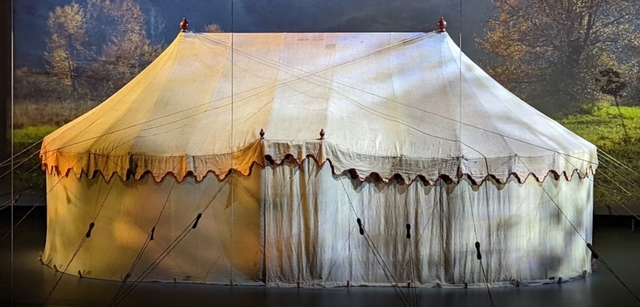George Washington's War Tent
This museum in Philadelphia, Pennsylvania, tells the story of the American Revolution. It opened on April 19, 2017, the 242nd anniversary of the battles of Lexington and Concord. It has an incredible array of exhibits and is well worth a visit.
The war tent that Washington lived in during the American Revolution is a living history exhibit. The war tent was constructed during the eighteenth century and is currently on display at the Museum of the American Revolution. The Museum is currently restoring and preserving the tent, which is 23 feet long and fourteen feet wide.
George Washington's war tent is an excellent exhibit at the Museum of the American Revolution in Old City, Philadelphia. This canvas tent served as the Command Center for Washington during the Revolutionary War. It is located in a 300-square-foot climate-controlled object case accompanied by theatrical lighting and a surround-sound track. Admission to the museum costs $24 for adults and $13 for children six and older.
The tent is made of flax linen fabric, which was used in the early 1700s for making linen. It was probably imported from the eastern Mediterranean or eastern Europe and used for the tent's walls and roof. This fabric was used for many other purposes, including bedding. The tent's interior walls are made of grayish flax linen stitched in a herringbone pattern.
The tent is the most famous surviving example of George Washington's war tent. It's an impressive twenty-three feet long, fourteen feet wide, and twelve feet tall. It features three rooms, a private office, a meeting area, and two passageways. It also features a baggage closet and quarters for Washington's slave William Lee.
The museum's plan to display George Washington's war tent is an outstanding achievement, but it is not without problems. To keep the tent in good condition, the museum hired structural engineers Keast & Hood, whose task was to design a new system for preserving the tent. This structure was engineered to protect the tent while maintaining historical accuracy.
This museum is a great place to learn more about the American Revolution. Not only does it have many artifacts from the Revolution, but the museum also has interactive galleries and theater experiences that allow visitors to get a closer look at the period.
The tent survived the American Civil War. After the Revolutionary War, it was owned by General Custis' daughter, Mary Anna. Her daughter eventually married Confederate General Robert E. Lee. They kept it until the Civil War. However, the tent ended up in the hands of the federal government for 40 years before it was returned to the Lee family.
